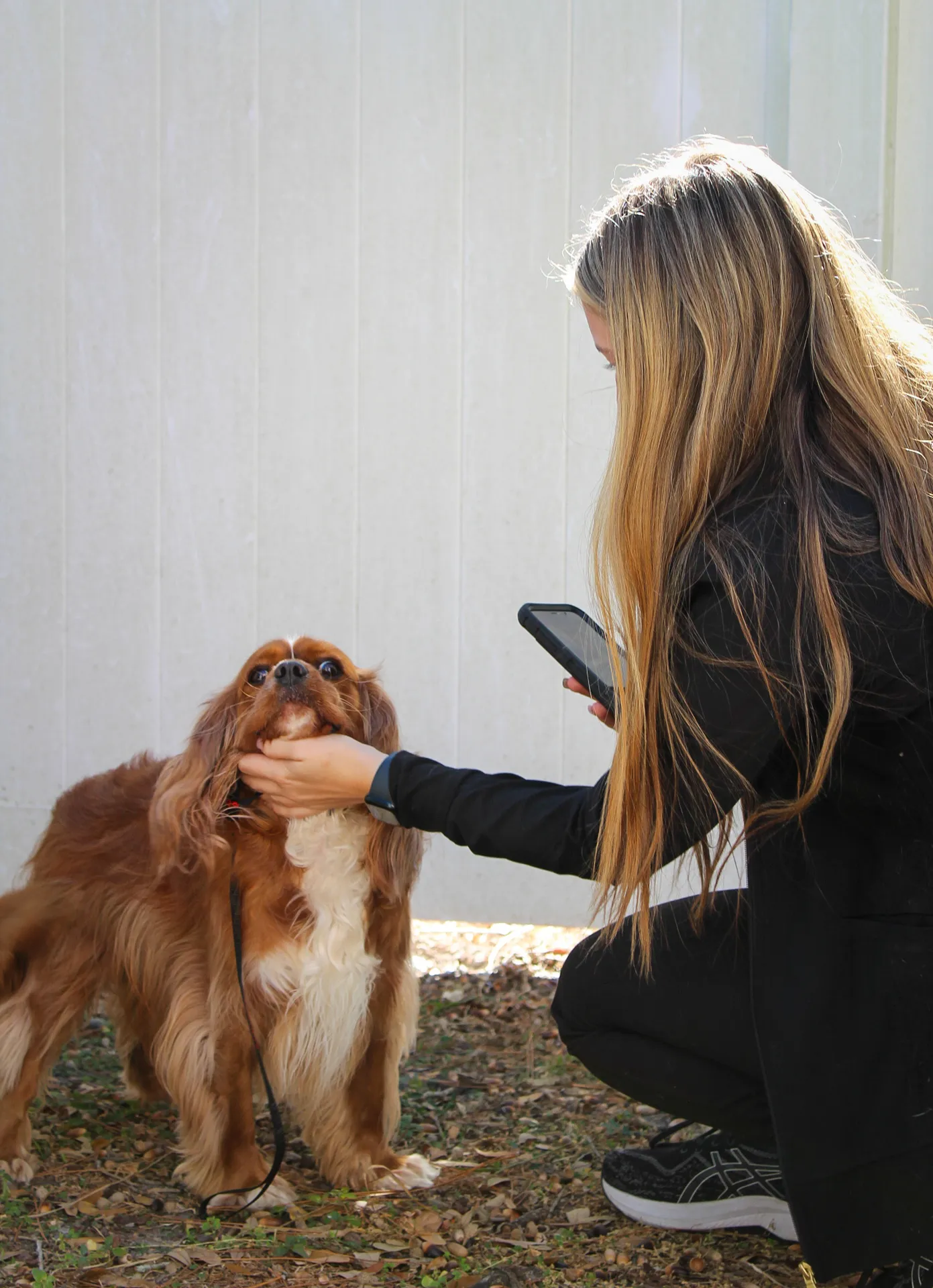TPLO Recovery Guide
Ensuring a Smooth Recovery for Your Pet
Recovery after a Tibial Plateau Leveling Osteotomy (TPLO) surgery is crucial to your pet’s overall well-being. Proper care during this time can significantly impact their healing process. Here’s a comprehensive guide to help you support your pet through their recovery.
Immediately After Surgery
After your pet's TPLO surgery, they will likely be groggy from anesthesia. Create a calming environment for them to rest comfortably. Ensure they have a quiet space with their favorite bedding and minimal disturbances. It’s essential to follow the medication schedule prescribed by your veterinarian to manage pain and prevent infection.
Post-Surgery Care at Home
Managing your pet’s recovery involves several important steps:
- Limit Activity: Restrict your pet’s movement to short, controlled potty breaks. Avoid any running or jumping to prevent strain on the surgical site.
- Monitor the Surgical Site: Regularly check the area for signs of infection such as redness, swelling, or discharge. Keep the site clean and dry as directed by your vet.
- Administer Medications: Follow the instructions for pain medications and antibiotics closely to ensure effective recovery.
Follow-Up and Rehabilitation
Follow-up appointments are vital for monitoring your pet’s healing progress. During these visits, we will:
- Assess the Surgical Site: Examine the area to ensure proper healing and address any concerns.
- Discuss Rehabilitation Needs: Depending on your pet’s progress, we may recommend physical therapy or specific exercises to aid in recovery.

Signs to Watch For
Be attentive to any changes in your pet’s behavior or health. Contact us if you observe:
- Difficulty Breathing: Any signs of respiratory distress or irregular breathing.
- Excessive Swelling: Swelling beyond what is expected or worsening over time.
- Persistent Pain or Lethargy: Ongoing signs of discomfort or unusual tiredness.
Gradual Return to Activity
Reintroducing exercise should be done gradually. Begin with controlled, low-impact activities and slowly increase as advised by your veterinarian. Monitoring your pet’s comfort and adjusting their activity level is crucial to ensuring a safe return to their normal routine.
TPLO Recovery Checklist
This checklist is designed to be adapted to your pet’s specific needs and preferences, ensuring a smoother and more personalized recovery process.
Essential Items:
- Comfortable Bedding: Provide a soft, supportive bed or crate cushion.
- Ramp or Steps: For easy access to favorite spots (couch, bed).
- Safety Gates: To limit access to stairs or other areas.
- Food and Water Bowls: Ensure food and water are accessible and within reach. Elevated bowls can be easier for some pets to use.
- Medication and Supplements: Keep all prescribed medications and any approved supplements within easy reach.
- Leash and Harness: Use a harness for controlled movement during bathroom breaks.
- Toys and Chews: Offer distraction and comfort (avoid toys that encourage jumping).
Recovery Aids:
- Recovery Suit or Cone: To prevent your pet from licking or chewing at the surgery site.
- Slippery Surface Protection: Non-slip mats for floors to prevent accidents.
- First-Aid Kit: For any unexpected issues.
Creating a Comfortable Space:
- Quiet Area: Set up a calm, quiet space away from household activity.
- Comfort Items: Include your pet’s favorite blanket or bedding for added comfort.
To-Do List:
- Follow-up Appointments: Schedule and attend all recommended check-ups.
- Daily Monitoring: Check the surgery site for signs of infection or issues.
- Exercise Restrictions: Adhere to recommended activity levels and restrictions.
- Feeding Instructions: Follow any specific dietary or feeding guidelines.
Personalizing Tips:
- Routine Adjustments: Maintain a similar routine to keep your pet comfortable.
- Favorite Items: Incorporate your pet’s favorite blanket, toys, or bed.
- Comforting Presence: Spend time with your pet to offer reassurance and comfort.
- Media for Relaxation: Use calming TV shows, gentle music, or nature sounds to soothe your pet.
Coordination Tips:
- Involve Family Members: Ensure everyone knows their role in the pet’s care, including feeding, medication, and walks.
- Communicate with Other Care Providers: If you have other caregivers or family members involved, keep them informed about the recovery plan and any specific needs.
Tips for Giving Pills to Your Dog
During the recovery process, your dog may be prescribed pills. We understand it can be tricky to get pups to take their medications, so here are some tips to help:
- Hide in Food: Place the pill inside a small amount of your dog’s favorite food, like cheese or peanut butter. Ensure the food is soft enough for easy ingestion.
- Use a Pill Pocket: Purchase pill pockets or treats specifically designed to hide pills. These treats are designed to mask the taste and make swallowing easier.
- Crush and Mix: If your vet approves, crush the pill and mix it with a small amount of wet food or a tasty liquid treat.
- Hand Administration: Gently open your dog’s mouth, place the pill as far back on their tongue as possible, and promptly close their mouth. Follow with a treat or a gentle massage on their throat to encourage swallowing.
- Pill Dispenser: Use a pill dispenser or “piller” to place the pill directly into the back of your dog’s throat. This tool can make the process quicker and less stressful.
- Positive Reinforcement: After successfully giving the pill, reward your dog with a treat or praise. Positive reinforcement can make future pill-giving easier.
- Consult Your Vet: If your dog consistently refuses to take pills, consult your vet for alternative options, such as liquid medications or injectable forms.
These strategies can help make administering medication a smoother experience for both you and your dog.
Rehabilitation Support for Your Dog's TPLO Recovery
If you're considering post-TPLO rehabilitation for your dog, Dr. Jennifer Brown at Florida Veterinary Rehabilitation and Sports Medicine is an excellent choice. With extensive experience in both large animal surgery and canine rehabilitation, she brings a unique perspective to recovery, using advanced techniques like regenerative medicine and diagnostic ultrasound. Her dedication to canine athletes, along with her compassionate care, ensures that your pet will receive the highest level of rehabilitation to help them return to a healthy, active life.
Supporting Your Pet’s Recovery
Our team is here to support you every step of the way during your pet’s recovery. If you have any questions or concerns, please don’t hesitate to reach out. We are committed to making your pet’s recovery as smooth and comfortable as possible.

